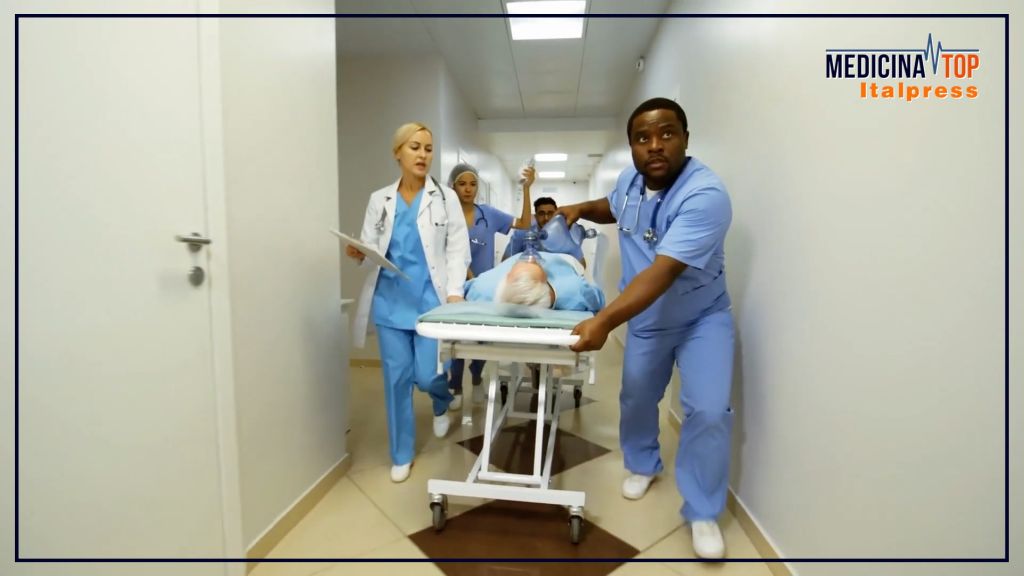MILAN (ITALPRESS) – Emergency surgery is one of the most crucial areas of medicine, because it deals with interventions that require immediate action to save a patient’s life or prevent serious complications. In critical situations, time is a determining factor: every minute can mean the difference between life and death, making a rapid and coordinated response by highly specialized teams essential. Continuous staff training, the adoption of advanced surgical techniques and the use of immediate diagnostic technologies are key to ensuring successful interventions. These are some of the issues discussed by Hayato Kurihara, director of emergency surgery at Policlinico di Milano and vice president of the European Society for Trauma and Emergency Surgery, interviewed by Marco Klinger, for Medicina Top, a TV format of the Italpress news agency. “Diabetes is always considered the disease with the highest incidence in Western countries. Well, if we took all the situations that need an urgent surgical procedure, the incidence is one-third higher than diabetes and twice as high as any cancer diagnosis,” he began. “In Italy we have 30 million accesses to emergency rooms, a good part of these accesses require urgent surgical evaluation. Emergency surgery is therefore critical to the health care system: “Emergency surgery interventions are those in case of severe infections, peritonitis, occlusions, or even appendicitis, ischemia, then there are those related to traumatic emergency pathology, such as can be multi-trauma or stab wounds and whatnot,” Kurihara explained. “The most frequent surgeries in emergency surgery are those for peritonitis and bowel occlusions, but what is important for the surgeon is to be able to maintain his skills by operating even in quieter situations and not always in emergencies, otherwise we will have bad emergency surgeons. “Minimally invasive and laparoscopic surgery has radically changed the approach to emergency surgery, and we are already starting to talk about artificial intelligence,” he reiterated, “Modern operating rooms now look like spaceships, we are really pushing ourselves to the extreme, even on emergency surgery, not forgetting, however, that we must always know how to do traditional surgery. Policlinico di Milano is among the flagships in this field: “I think it was the first emergency surgery in the world. The level is very high, with a motivated young team, among a thousand difficulties by virtue of the huge volume of patients,” the professor stressed, before talking about some of the projects carried out in the field of training. “The Emergency Surgery Course is one of the two projects we are carrying out, it is dedicated to the training of general surgeons who want to focus their culture and leadership on spontaneous and nontraumatic surgical pathologies. Conversely, there is another course, Definitive Surgery Trauma Care, developed by the International Association for Trauma Surgery and Intensive Care, which is dedicated precisely to those surgeons who have low exposure to violent trauma, to take them out of their comfort zone, to teach them maneuvers that happen rarely but can save patients’ lives.” There is, however, a growing difficulty related to generational turnover: “It is not enough gratification in managing the patient, emergency medicine needs to be restructured,” Kurihara claimed, “Not least because, it consumes the physician: try to imagine doing so many night shifts, circadian rhythms go out the window. You have to try to attract new physicians. There is a lot of interest elsewhere; in Spain, emergency surgery is exploding, and half of the new staff are women.” Finally, on managing stress for a physician engaged in emergency surgery: “How do you manage stress? Simple, I don’t manage it. In the end, the greatest difficulty in the team is communication,” he concluded, “If there is one place where the surgeon is calm and serene, it is the operating room.
– photo taken from Top Medicine video -(ITALPRESS).

